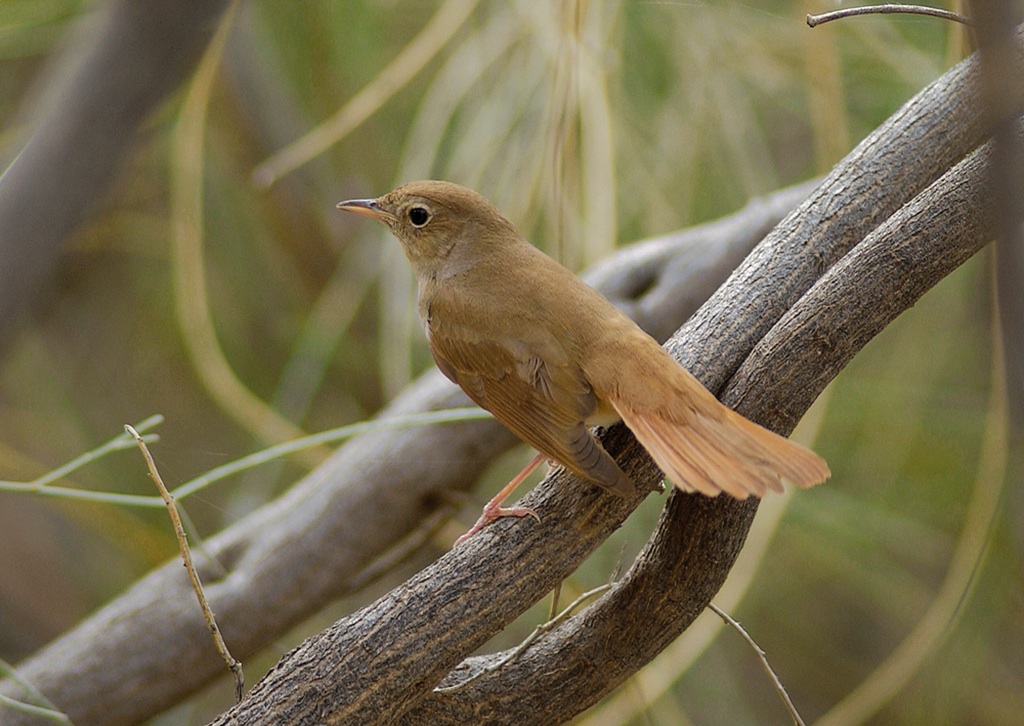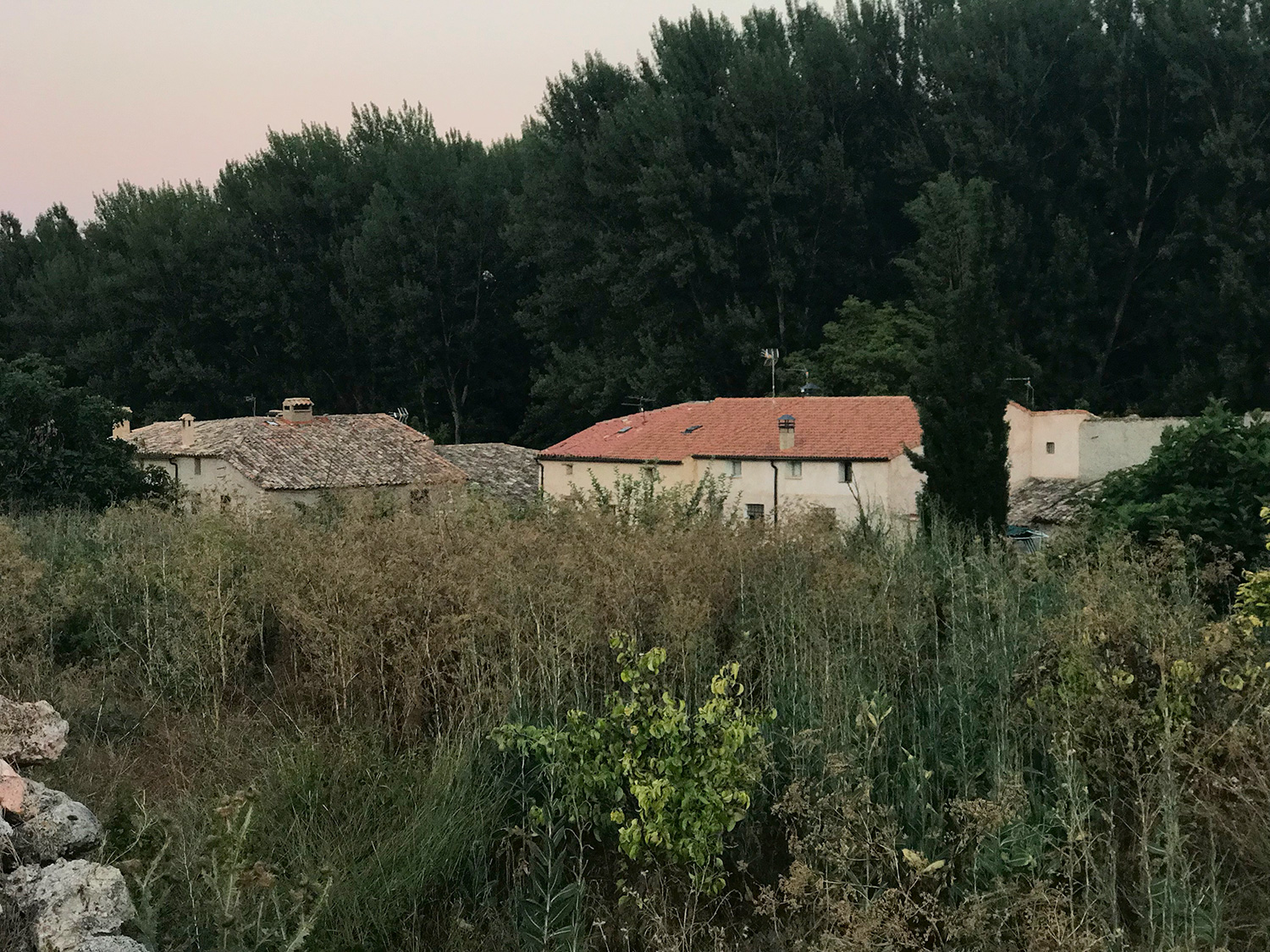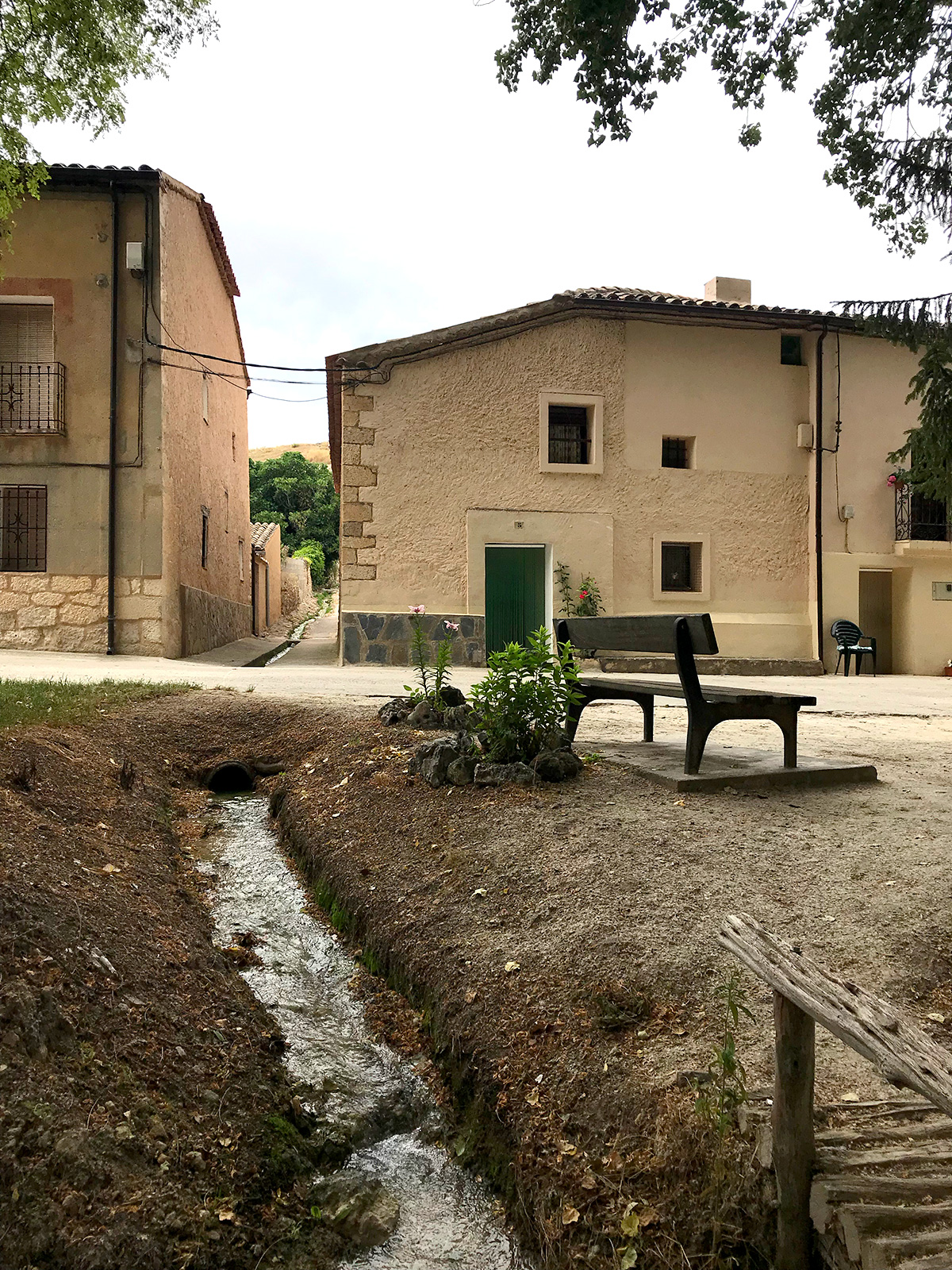A night-time chorus
Text by Stephen Menzie
I’d been in central Spain for several days trying to record Dartford Warblers Sylvia undata – between strong winds, rain, and unseasonably cold temperatures, I hadn’t managed to get very far with that task. Every evening, despite the wind, up to seven Common Nightingales would begin singing in the poplar belt at the edge of the village where I was staying. They’d continue until after sunset, by which time up to three Eurasian Scops Owls Otus scops had started up as well. After a little while, though, the nightingales would fall silent and the next few hours of the night were left to the owls.
Speak to the locals about the scops owls and you’ll hear two conflicting stories. For as long as anyone can remember, the local name for scops owl has been “little crow”. Passed down through the generations, it was local belief that the toot noises they were hearing at night came from roosting crows. My friend, Marcel Gil Velasco, whose family hails from the village, had explained to his relatives that the sound was in fact coming from an owl and not a crow; but sometimes folk-law is more persistent than rationale and the belief that the sound was coming from a crow continued. Then, one summer, there was unease amongst the villagers. Several snakes had been heard at night, high up in the trees on the edge of the village. The sound they were making? Yes, you guessed it: a short, plaintive toot. The fact that the year before, and for every year in living memory, this sound had been assigned to corvids seemed to make little difference. This year, the sound was coming from snakes, and no amount of explanation would persuade the locals otherwise. Winters in this part of Spain can be long and cold – sufficiently long that, by the time the scops owls had returned again the following spring, some villagers had forgotten about their serpentine worries of the previous year and the nocturnal sounds were, once again, attributed to the “little crow”. For others, though, worries still remained, and tales of having seen snakes make this noise started to emerge. The result: an enduring debate within the village as to what the sound is – a snake, or a crow? The one thing it definitely isn’t, if you ask any of the residents, is an owl!
One night, up late with a bottle of Rioja, I was able to hear the second night-time change-over: as the almost-full moon rose in the sky, the “little crows” became increasingly less vocal and the chorus of nightingales got going again. The weather outside had become surprisingly benign – the temperature was such that a coat wasn’t required (the only time that weekend), the rain had stopped, and the wind was all-but-gone.

Common Nightingale Luscinia megarhynchos, Bou Hedma, Tunisia, 4 May 2005 (René Pop)
At its peak, the village hosts around 150 people – as most small villages in central Spain, most of the population has now moved to large cities such as Madrid, Zaragoza or Barcelona but come back to visit for village festivities or summer weekends. The village’s year-round residents number no more than around 15 people and a few dogs. At the time of my visit, there were just ten people in the village – so, despite the birds singing from right on the very edge of the residential area, you won’t hear anything to betray that.

Dusk at Aguaviva de la Vaga, Soria, Castilla y León, Spain, July 2018 (Stephen Menzie). The belt of poplars where the nightingales were singing is at the back of the photo, behind the row of houses.
Street lights illuminate the road that runs along the edge of the village between the poplar belt and the old, thick-walled stone houses. Most of the nightingales were on the village side of the poplar belt, singing from the understory on the edge of the streetlights’ reach. One bird was singing just 20 m or so from the front door, and this is the bird I recorded. Leaving the microphone in place, pointing at the bird, I was able to record 7 minutes of pure bliss.
While bouts of song in the daytime are aimed at resolving territorial disputes, lengthy nighttime singing like this serves to attract a mate. In the still night air, the song travels much further than it would in daytime, well beyond the boundaries of a bird’s territory and, hopefully, into the ears of a female. That these birds were singing for such lengths through the night implies they weren’t yet paired up; or, perhaps, that the pair bond was still at a sufficiently early stage as to need to reenforcement.
Common Nightingales Luscinia megarhynchos, Aguaviva de la Vaga, Soria, Castilla y Léon, Spain, 01:58, 19 May 2019. Several singing from poplar belt on edge of village. Background: rustling of poplar leaves and babbling water. 190519.SM.015800.00
There are just three things aduible in the recording. With the Scops Owls now silent, the Nightingales take centre stage. Several are audible in the recording and, with headphones, you get a sense of them being on both sides, to the left and to the right of you, along the poplar belt.
The ‘white noise’ in the background comes from the rustling of thousands of poplar leaves. Despite the relatively rather still conditions, poplar leaves have a habit of rustling away at the slightest hint of a breeze. Still, it adds a rather nice bed to the recording and somehow helps to ‘hold up’ the songs of the nightingales.
Finally, listen carefully and you can occasionally catch the sound of babbling water. Around the village are several natural water sources, which are directed along channels through the village and out into the surrounding fields. The water sources around the village are something that the locals are very proud of: one of them has been made into a shrine-like font at the top end of the village and, indeed, the name of the village – Aguaviva de la Vega – translates as something like life-giving water of the fertile valley. It’s a romanticism that few English village names could achieve.

Aguaviva de la Vaga, Soria, Castilla y León, Spain, July 2018 (Stephen Menzie). One of the water channels running through the village, viewed looking out from the poplar belt.
